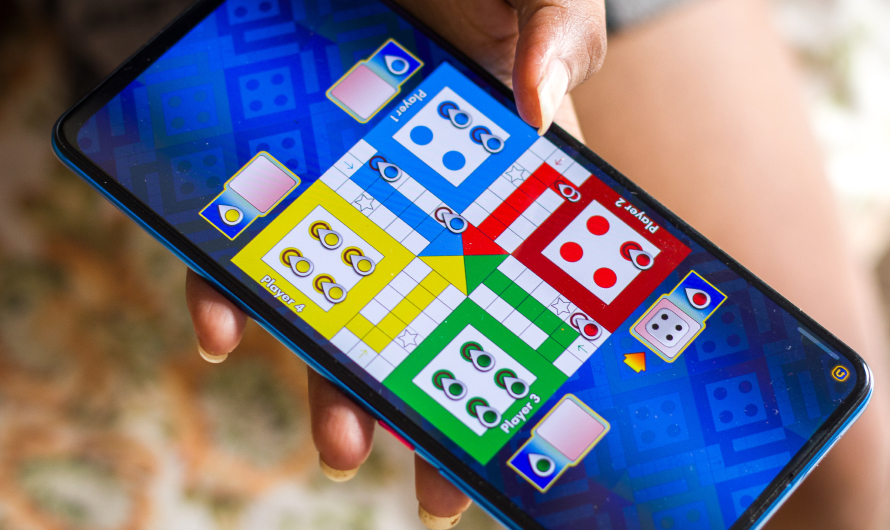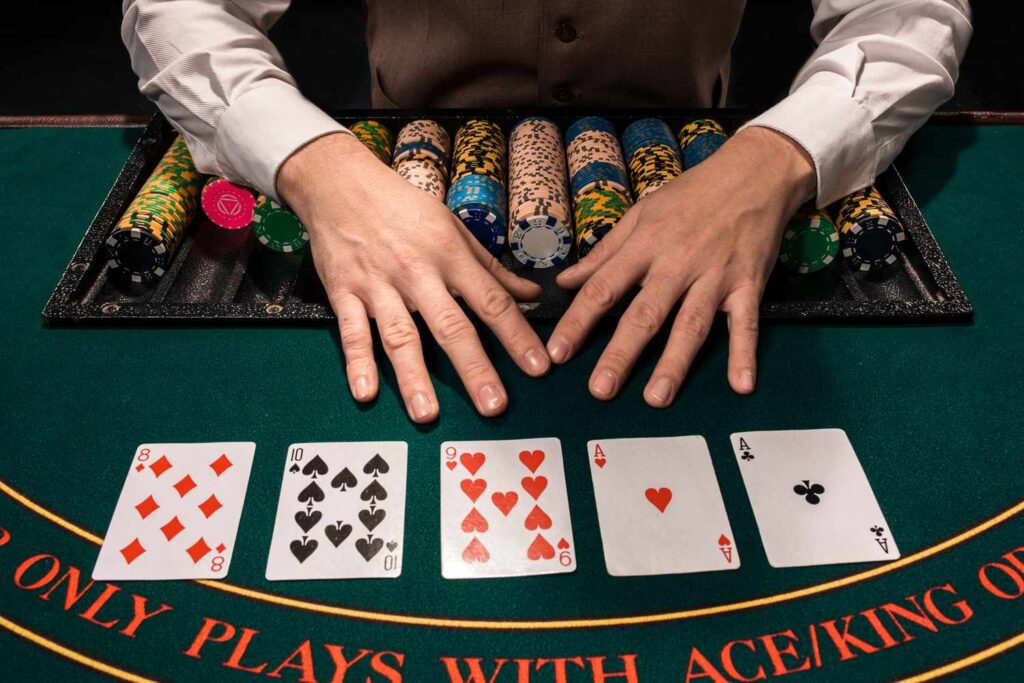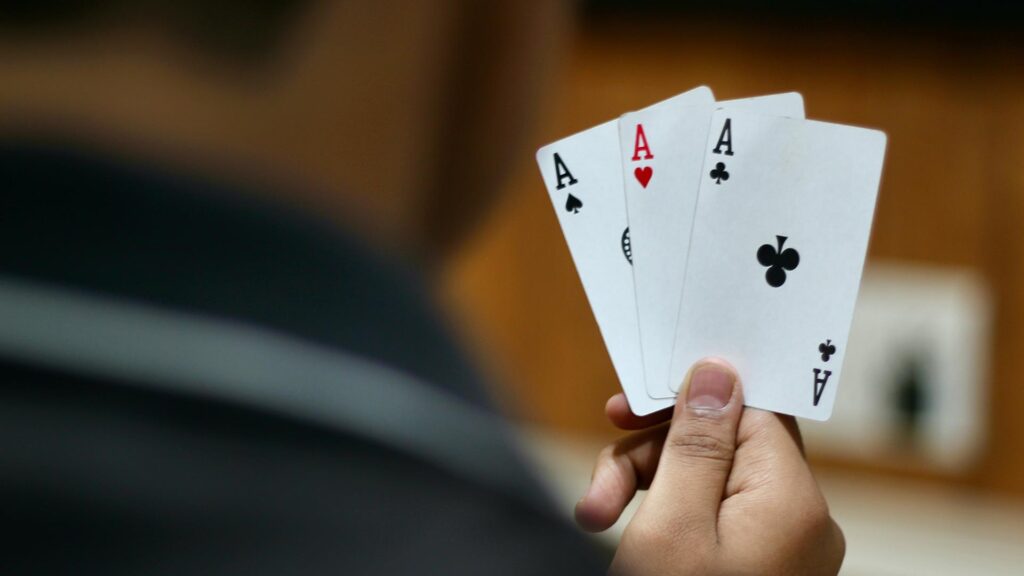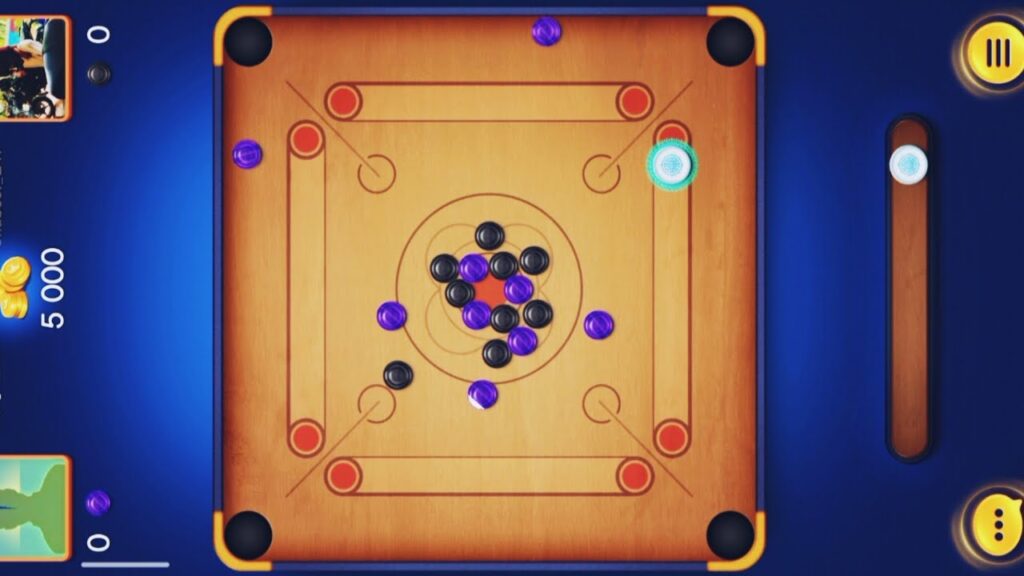Explore the Top Real Money Games of 2024

Embark on an exciting journey through the world of gaming that not only entertains but also offers lucrative real cash rewards.
Here’s a compilation of well-known games where you can play and win real money.
Table of Contents
Poker
A strategic card game where players bet on their hand’s strength to outwit opponents and claim the pot money.

How to Play Poker?
While there are various versions of the game, the most popular is Texas Hold’em. Here’s a beginner’s guide to playing Poker:
Objective: The primary goal in Poker is to win chips or money by forming the best hand or by convincing other players to fold their hands.
Poker Rules
Hand Rankings: Hand ranking typically ranges from high card (the lowest) to a royal flush (the highest).
- Blinds: Before each hand, two players place mandatory bets called blinds. This ensures there’s always something in the pot to play for.
- Dealing: Players are dealt two private cards (hole cards). Then, five community cards are dealt face-up in the middle of the table over three rounds (flop, turn, and river).
- Betting Rounds: Betting occurs after each round of cards is dealt. Players can check (pass the action), bet, raise, or fold their hand.
- Showdown: If two or more players are remaining after the final betting round, a showdown occurs. Players reveal their hands, and the best hand wins the pot.
Gameplay:
- Pre-flop: Players receive their hole cards. The player to the left of the big blind starts the betting action.
- The Flop: Three community cards are dealt face-up. Another round of betting takes place, starting with the player to the dealer’s left.
- The Turn: A fourth community card is dealt. Another round of betting occurs.
- The River: The fifth and final community card is dealt. There’s a final round of betting.
- Showdown: If more than one player remains after the final round of betting, they reveal their hands to determine the winner.
Play Poker with Real Money
Playing poker online with real money involves a few key steps. First, find a reputable online poker site that suits your preferences and offers secure transactions. Create an account by providing accurate personal information and verifying your identity as required. Once registered, deposit funds into your account using various payment methods provided by the platform. Browse the available poker games and choose one that matches your skill level and budget. Join a table, place your bets, and play against other players or the house, following the game’s rules and strategies. Remember to manage your bankroll wisely and be aware of the risks associated with real-money gaming. Lastly, when you’re done playing, you can withdraw your winnings back into your chosen account.
Top Poker Sites in India
Rummy
A skill-based game rewarding quick thinking and smart card arrangements.
How to Play Rummy
Here’s a step-by-step guide on how to play Rummy:
- Setup: Rummy can be played between 2-6 players and a standard 52-card deck. Decide the number of cards each player will receive (e.g., 10 cards for 2 players, 7 cards for 3-4 players, 6 cards for 5-6 players). Place the remaining cards face down as a draw pile and flip the top card to start the discard pile.
- Objective: The goal is to form valid sets (three or four cards of the same rank but different suits) or runs (three or more consecutive cards of the same suit).
- Start of Play: The player to the dealer’s left begins. On a turn, players draw a card from the draw pile or the top card from the discard pile. To end a turn, they must discard a card onto the discard pile.
- Building Melds: As players collect cards, they aim to create sets or runs in their hand. Once a player has the required combination, they can lay it face-up on the table, called “melding.”
- Manipulating Melds: Players can also add cards to melds already on the table. For instance, if a set is 3-4-5 of hearts, a player holding the 6 of hearts can add it to the set.
- Ending the Round: The game ends when a player melds all their cards, declaring “Rummy.” Alternatively, if the draw pile exhausts and no player can make further moves, the round ends.
- Scoring: Calculate points based on the cards remaining in each player’s hand. Numbered cards carry their face value, face cards (Jacks, Queens, Kings) carry 10 points each, and Aces usually carry 1 point. The objective is to minimize points by forming melds and discarding high-value cards.
- Winning: The player with the fewest points at the end of the round wins. Some variations may have a predetermined winning score across multiple rounds.
Top Rummy Sites in India
Call Break
Call Break requires strategic thinking, understanding the strength of your hand, and predicting accurately to win. The game blends elements of skill, strategy, and a bit of luck in winning tricks and achieving your bid.
How to Play Call Break
Here’s a step-by-step guide to playing the game:
Number of Players: Call Break is typically played by 4 players, but variations for 3 or 5 players exist.
Setup: Use a standard 52-card deck. Deal the entire deck equally among the players.
Objective: The primary goal is to win the maximum number of hands (tricks) and accurately predict the number of hands you’ll win in each round.
Top Call Break Sites in India
Call Break Rules
Gameplay:
- Bidding: Players bid on the number of hands they expect to win in that round. The bids are essentially the number of tricks a player believes they can take based on their hand.
- Game Rounds: The game consists of several rounds (deals), typically equal to the number of cards dealt. In each round, players play one card in turn, following suit if possible.
- Trick-Taking: The player who played the highest card in the leading suit wins the trick unless a trump card is played. The suit of the first card played in a round determines the trump suit for that round.
- Scoring: At the end of each round, players’ scores are tallied based on the number of tricks they’ve won compared to their bid. Points are gained or lost based on meeting or failing to meet the bid.
- End of Game: The game usually continues for a predetermined number of rounds or until a player reaches a specified score, at which point the player with the highest score is declared the winner.
Card Hierarchy:
- The highest card in each suit is the Ace, followed by the King, Queen, Jack, 10, 9, 8, 7, 6, 5, 4, 3, and 2.
- In Call Break, the ranking of the cards within a suit is essential, especially when trump cards are involved.
Variations:
- Variations in Call Break might involve different bidding systems, variations in trump selection, or scoring methods.
Teen Patti
Teen Patti is a popular card game, also known as Indian Poker or Flush.

How to Play Teen Patti
Players:
- 3 to 6 players can participate in Teen Patti.
Setup:
- A regular 52-card deck is used without the jokers.
- Each player antes (puts in a predetermined amount) into the pot before the cards are dealt.
Card Ranking:
- The rankings are similar to poker, with three-of-a-kind being the highest, followed by a straight flush, straight, etc. (In case of no combinations, the highest card determines the winner).
Teen Patti Rules
Gameplay:
- Dealing Cards: The dealer distributes three cards face-down to each player in an anti-clockwise direction.
- Betting Rounds:
- Boot Amount: The first betting amount, set by the dealer or the game rules.
- Blind Bets: In some variations, the player to the left of the dealer must place a ‘blind’ bet, usually half the minimum bet, and the next player places the ‘chaal’ or ‘seen’ bet (equal to the minimum bet).
- Turns: Each player has the option to bet, call (match the current bet), raise (increase the bet), or fold (discard their cards and lose any bets made).
- Playing Hands:
- The player with the highest-ranking hand at the showdown wins the pot.
- If there’s a tie, the pot is split among the tying players.
- Players can also win by betting in a way that causes all other players to fold.
Variations:
- Muflis: Where the ranking of the hands is reversed, i.e., the weakest hand becomes the strongest.
- AK47: If a player has an Ace, King, 4, and 7 of any suit, they win instantly.
- Best-of-Four: Players can ask for a fourth card and choose the best three out of four cards.
Top Teen Patti Sites in India
Solitaire
Solitaire is a classic single-player card game played with a standard deck of 52 cards. The goal is to arrange all the cards in a specific order or pattern.
How to Play Solitaire
Setup:
- Deal Cards: The game starts by dealing out 7 piles of cards. The first pile should have 1 card, the second pile should have 2 cards (1 face down, 1 face up), the third pile should have 3 cards (1 face down, 2 face up), and so on until the seventh pile, which has 7 cards (6 face down, 1 face up).
- The remaining deck becomes the draw pile.
Objective:
- The primary goal in most variations is to build four foundation piles in ascending order from Ace to King, with each pile representing one suit (hearts, diamonds, clubs, spades).
Solitaire Rules
Gameplay:
- Building Foundation Piles:
- Start by moving Aces (if available) from the tableau to the foundation piles.
- Build on these foundation piles sequentially, placing cards of the same suit in ascending order (2, 3, 4, etc.) on the Aces until you reach the King for each suit.
- Tableau and Stock:
- Tableau Piles:
- Cards in the tableau can be moved between piles following descending order and alternating colors. For instance, you can place a red 7 on a black 8.
- Moving cards within the tableau or to the foundation piles creates new opportunities for moves.
- Draw and Discard:
- If there are no more moves available in the tableau, draw cards from the stock pile (remaining deck) to keep playing.
- Use the cards drawn from the stock pile to make moves in the tableau or to build on the foundation piles.
- Tableau Piles:
Winning:
- The game is won when all cards are moved to the foundation piles in ascending order from Ace to King for each suit.
Variations:
- There are various types of Solitaire games (Klondike, Spider, FreeCell, etc.), each with its own rules and strategies.
Fantasy Games
Fantasy Cricket/Football/Kabaddi
Fantasy sports, whether it’s Cricket, Football, Kabaddi, or any other sport, share a common premise: participants create virtual teams comprising real-life players and earn points based on their on-field performances.
How to Play Fantasy Games
Basics of Fantasy Sports:
Platforms:
- Multiple platforms exist where participants can engage in fantasy sports, each offering its own set of rules, scoring systems, and user interfaces.
Team Creation:
- Player Selection: Participants choose players from real teams within a virtual budget or player value system.
- Team Composition: They create a balanced team across various positions (batsmen, bowlers, goalkeepers, raiders, defenders, etc.) based on the sport’s requirements.
- Captain & Vice-Captain: A captain and vice-captain are chosen strategically, as they earn additional points.
Scoring:
- Points are awarded based on the real-life performance of selected players during actual matches.
- Specific actions earn points (e.g., goals, runs scored, wickets taken, tackles, assists, etc.).
- Captains usually earn bonus points, encouraging strategic selection.
Strategies:
- Research: Knowledge about player form, injuries, recent performances, and team dynamics is crucial for making informed selections.
- Balance & Budgeting: Managing the virtual budget to create a balanced team across positions is key.
- Fixture Analysis: Considering upcoming fixtures and opponents helps in strategic player selection.
Similarities Across Fantasy Sports:
- Virtual Team Management: Whether it’s Cricket, Football, or Kabaddi, the fundamental approach of creating and managing virtual teams remains consistent.
- Performance-based Scoring: Points are awarded based on player performances in actual matches across all fantasy sports.
- Strategic Element: Winning in fantasy sports involves a mix of skill, strategy, and knowledge about the sport and its players.
Differences Across Fantasy Sports:
- Scoring Systems: Each sport has its unique scoring system based on the actions relevant to that sport (runs, goals, tackles, etc.).
- Player Positions: The positions and roles within the game vary from sport to sport, affecting team composition strategies.
- Inherent Rules: Different sports have their own rules and regulations, influencing how points are scored and the strategies adopted.
Top Fantasy Gaming Sites in India
Arcade Games
Ludo
Ludo is a classic board game that’s easy to learn and fun to play with friends and family.
How to Play Ludo?
Here’s a guide on how to play:
Setup:
- Board and Pieces: The game is played on a square board with a cross-shaped path. Each player has four tokens of the same color.
- Starting Positions: Each player places their four tokens in their respective starting area (the corner of the board closest to them).
Gameplay:
- Objective: The goal is to move all your tokens from the starting area to the home area (center of the board) by rolling a die and moving the tokens based on the numbers rolled.
- Turns: Players take turns in a clockwise order.
- Starting the Tokens: To start moving a token, a player must roll a six on the die. If they roll a six, they can move a token out of the starting area onto the board.
- Moving Tokens:
- After getting a token onto the board, the player moves it based on the numbers on the die. Tokens move in a clockwise direction around the board.
- A player must use the exact number rolled to move a token out of the starting area or around the board.
- If a player rolls a six, they get an extra turn.
- If a player lands on a space occupied by an opponent’s token, the opponent’s token is sent back to the starting area.
- Safe Zones: The middle section of the cross-shaped path is a safe zone where tokens cannot be captured by opponents.
- Getting Home: Once a token completes a full lap around the board, it enters the home area. The player needs to roll the exact number to move a token into the home area.
- Winning: The first player to get all four tokens into the home area wins.
Carrom
Carrom is a tabletop game that involves flicking disks with a striker into pockets at the corners of a rectangular board.

How to Play Carrom?
Setting Up:
- Board: The game is played on a square wooden board with pockets in each corner and a larger pocket in the center.
- Pieces: Use carrom men (round wooden disks) in two colors, a striker (larger circular piece), and a powder to ensure smooth movement.
Gameplay:
- Objective: The primary goal is to pocket all your carrom men and the Queen (specific carrom piece) before your opponent does.
- Player Setup: Players sit opposite each other, and each player’s carrom men are arranged in a specific pattern within their quadrant of the board.
- Striker and Break: Players take turns using the striker to hit their own carrom men. The first turn involves the “break,” where a player aims to pocket a carrom man.
- Rules of Play:
- Pocketing Carrom Men: Players aim to flick the striker to hit their carrom men, trying to pocket them into the corner pockets.
- Pocketing the Queen: Before pocketing the last carrom man, a player must pocket the Queen. Failing to do so results in a penalty.
- Fouls: Certain actions, such as pocketing the striker, failing to hit a carrom man, or touching a carrom man, can result in penalties for the opponent.
- Scoring:
- Points are scored based on the number of carrom men pocketed by each player. The Queen carries additional points.
- The player with the highest points at the end of the game wins.
- Victory: The game ends when all Carrom men have been pocketed by a player, and the Queen has been successfully pocketed by the same player.
Bubble Shooter
Bubble Shooter is a popular puzzle game that involves shooting colored bubbles to clear the board.
How to Play Bubble Shooter
Basics:
Board Layout:
- The game board consists of a grid filled with bubbles of various colors.
Objective:
- The goal is to clear all bubbles from the board by shooting bubbles to create groups of three or more of the same color.
Gameplay:
- Shooting Bubbles:
- You control a launcher at the bottom of the screen that shoots bubbles towards the top.
- Aim by moving the launcher sideways and adjusting the trajectory.
- Tap or click to shoot the bubble. It attaches to the grid wherever it makes contact.
- Matching Bubbles:
- Shoot bubbles to create groups of three or more bubbles of the same color.
- When a group of matching bubbles is formed, they burst and are removed from the board.
- Bouncing Bubbles:
- If your shot doesn’t create a group of three or more bubbles of the same color, the bubble you shot sticks to the board.
- The board may also push down with each shot, making the space to shoot more limited.
- Strategies:
- Plan your shots carefully to create chain reactions by causing bubbles to fall and create new matches.
- Utilize angles to reach tricky spots and clear bubbles that are harder to reach.
- Losing Conditions:
- The game ends if the bubbles reach the bottom of the screen.
- Some versions have a limited number of shots, adding a strategic element to the gameplay.
Scoring:
- Points are typically awarded for each bubble popped, with bonus points for larger groups or combos.
- Some versions use a scoring system based on the number of shots taken to complete a level.
Variations:
- Different versions of Bubble Shooter might have power-ups, different board layouts, or additional features like special bubbles (e.g., bomb bubbles, rainbow bubbles) that add variety to the gameplay.
Pool Royale
Pool Royale is a mobile game that combines elements of billiards and strategy.
How to Play Pool Royale
Here’s a general overview of how it’s typically played:
Basics:
Objective:
- The goal in Pool Royale is to pocket all your assigned balls (stripes or solids) and then the 8-ball to win the game.
Gameplay:
- Match Setup:
- Players are assigned either the solid or striped balls. One player gets solids, and the other gets stripes.
- Each player’s objective is to pocket all their assigned balls before attempting to pocket the 8-ball to win.
- Game Mechanics:
- Similar to traditional pool, players use a cue stick to strike a cue ball, aiming to pocket the designated balls.
- Players take turns, and each turn involves attempting to pocket a ball of their assigned type (solid or stripe).
- Pocketing the 8-Ball:
- Once a player pockets all their assigned balls, they aim to pocket the 8-ball to win the game.
- However, players must legally pocket the 8-ball, ensuring it’s the last ball on the table after all their designated balls have been pocketed.
- Fouls and Penalties:
- Fouls are typically incurred by pocketing the opponent’s ball or scratching (pocketing the cue ball).
- Penalties may include allowing the opponent to place the cue ball in a specific position or giving them ball-in-hand (the ability to place the cue ball anywhere on the table).
- Strategies:
- Plan shots carefully to ensure the cue ball’s position for the next shot.
- Consider offensive and defensive strategies, trying to pocket your balls while preventing your opponent from pocketing theirs.
- Winning the Game:
- The player who successfully pockets all their assigned balls and then legally pockets the 8-ball wins the game.
Variations and Features:
- Different versions of Pool Royale might include various gameplay modes, such as tournaments, multiplayer matches, or special challenges.
- Some versions might also incorporate power-ups or unique cues with special abilities to enhance gameplay.
Archery
Playing archery online typically involves games or simulations that simulate the sport of archery.
How to Play Archery
Here’s a general guide on how these games are played:
Basics:
Game Types:
- Simulation Games: These games aim to replicate the physics and mechanics of archery as realistically as possible.
- Arcade Style Games: These are more casual and might incorporate fun elements or challenges beyond realistic archery.
Controls:
- Players usually control the aim and power of the bow and arrow using the mouse, keyboard, touchscreen, or motion controls, depending on the platform and game type.
Gameplay:
- Aiming:
- Use the controls to aim the bow at the target. This often involves adjusting the angle and direction of the shot.
- Some games might feature wind speed and direction, affecting the trajectory of the arrow.
- Drawing and Releasing:
- Click, tap, or use designated controls to draw the bowstring back (simulating pulling the string of a real bow).
- Release the arrow to shoot by letting go of the mouse button or releasing the controls.
- Scoring:
- Depending on the game mode, points are awarded based on accuracy and how close the arrow hits the center of the target.
- Some games might have multiple targets, moving targets, or obstacles, adding complexity and variety to gameplay.
- Game Modes:
- Target Shooting: Aim to hit the bullseye or specific targets for points.
- Timed Challenges: Shoot targets within a time limit.
- Distance Challenges: Hit targets placed at varying distances.
- Competitions and Challenges:
- Some online archery games offer multiplayer modes where players compete against each other in real-time or asynchronously.
- Challenges might include leaderboards, tournaments, or achievements to motivate players.
Fruit Fight
“Fruit Fight” is a game that may vary in its specifics across different platforms or versions. However, it generally involves gameplay where players use fruits as weapons to attack opponents.
How to Play Fruit Fight
Here’s a general guide to play the game:
Basics:
Gameplay:
- Platform and Versions:
- Fruit Fight might be available as a mobile app, online game, or as part of a multiplayer gaming platform.
- Objective:
- The primary goal is usually to eliminate opponents by using various fruits as projectiles or weapons.
Controls:
- Players typically control their character’s movement and aim using the keyboard, mouse, touchscreen, or gamepad, depending on the platform and game version.
Gameplay Mechanics:
- Fruit Selection:
- Players may have a variety of fruits to choose from, each with different characteristics or abilities (e.g., damage, speed, splash damage).
- Aiming and Shooting:
- Use the controls to aim your fruit projectile at opponents.
- Adjust the trajectory and power to hit targets accurately.
- Dodging and Movement:
- Maneuver your character to avoid incoming fruit attacks from opponents.
- Navigate the playing area strategically to find cover or advantageous positions.
- Power-Ups and Bonuses:
- Some versions of Fruit Fight may feature power-ups, bonuses, or special abilities obtained by collecting items or achieving certain objectives.
- Multiplayer or Solo Play:
- Depending on the game version, players might engage in solo gameplay against AI opponents or compete in multiplayer battles against other online players.
- Scoring and Winning:
- The game usually involves rounds or a set time limit.
- Score points by hitting opponents with fruits or being the last player standing.
- The player with the highest score or who fulfills the win conditions (such as eliminating all opponents) wins the round or the game.
Brick Smash
Brick Smash is a classic game where players use a paddle to bounce a ball and break bricks arranged in patterns at the top of the screen.
How to Play Brick Smash
Basics:
Objective:
- The primary goal in Brick Smash is to clear all the bricks on the screen using a ball and a paddle.
Gameplay:
- Controls:
- Players typically control the paddle using a mouse, keyboard, touchscreen, or gamepad, depending on the platform and game version.
- Launching the Ball:
- The game begins with a ball placed on the paddle.
- Players launch the ball by releasing it from the paddle using the designated controls.
- Bouncing the Ball:
- The ball moves upward, hitting the bricks and bouncing off the walls and obstacles.
- The paddle’s movement helps players control the ball’s trajectory to prevent it from falling off the screen.
- Breaking Bricks:
- The bricks are arranged in patterns or layers at the top of the screen.
- The ball breaks the bricks upon contact, and each brick destroyed earns points.
- Power-Ups and Bonuses:
- Some versions of Brick Smash might feature power-ups that fall when certain bricks are destroyed.
- Power-ups could include larger paddles, additional balls, or abilities that enhance gameplay.
- Losing a Life:
- If the ball falls below the paddle and goes off-screen, the player loses a life.
- The game typically provides a limited number of lives.
- Winning:
- The game continues until all bricks are cleared from the screen or until the player runs out of lives.
- The player with the highest score at the end wins.
Snakes and Ladders
Snakes and Ladders is a classic board game played with a numbered grid and dice.
How to Play Snakes and Ladders
Board:
- The game board consists of a grid with numbered squares, often 10×10 or 12×12.
- Some squares have illustrations of ladders, while others show pictures of snakes.
Objective:
- The goal is to be the first player to reach the final square (usually numbered 100) at the top of the board.
Gameplay:
- Setting Up:
- Each player selects a game piece (such as a coin or token) and places it on the starting square (usually square 1).
- Decide who goes first; traditionally, this can be determined by a roll of the dice.
- Rolling the Dice:
- Players take turns rolling a single die.
- The number rolled indicates the number of squares the player’s piece moves forward.
- Movement:
- Move your game piece the number of squares indicated by the dice roll.
- If your piece lands at the base of a ladder, you automatically climb to the top of the ladder and advance your position.
- If your piece lands on the head of a snake, you slide down to the tail, moving backward.
- Gameplay Rules:
- Players must reach the final square (usually 100) exactly. For example, if you’re on square 97 and roll a 4, you can’t move and must wait for the exact number needed.
- If a player rolls a number larger than the remaining spaces to reach the final square, the piece stays in its current position.
- Rolling a 6 grants the player another turn.
- Winning:
- The first player to reach or exceed the final square (often 100) wins the game.
Disclaimer: Playing real money games online involves financial risk and should be approached with caution. It’s essential to set limits, play responsibly, and only wager what you can afford to lose. Additionally, ensure that you are legally allowed to participate in online gaming according to the laws of your jurisdiction. Always review the terms and conditions of the gaming platform before engaging in any real money activities. Seek guidance or support if you feel that your gaming habits are becoming problematic or addictive.





